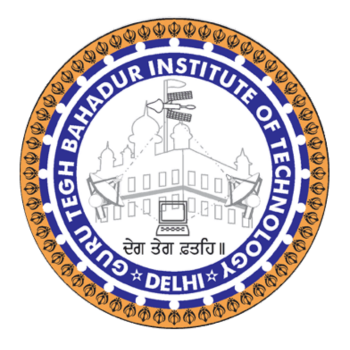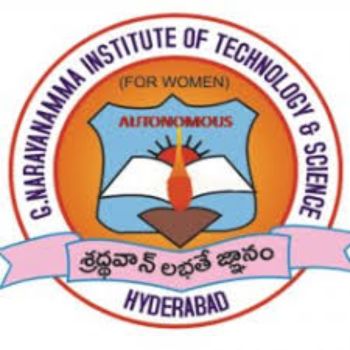Vemana Institute of Technology (Vemana IT) Bangalore has established itself as a significant player in technical education, with a placement ecosystem that reflects both industry demands and student preparedness. While placement outcomes vary across disciplines, the institute demonstrates consistent engagement with recruiters and adapts to evolving market trends through specialised programs. Below is a detailed analysis of its placement landscape, supported by verified data and contextualised within broader industry patterns. The institute’s placement trends reveal a clear alignment with national employment patterns in engineering, where computer science and emerging technologies dominate recruitment.
Table of Contents
- Vemana Institute of Technology- Placement Overview
- Vemana Institute of Technology- Branch-wise Placement Trends
- Vemana Institute of Technology- Industry Engagement and Recruiter Profile
- Vemana Institute of Technology- Placement Process and Student Preparation
- Vemana Institute of Technology- Career Pathways and Higher Education
- Vemana Institute of Technology- Future Outlook
Vemana Institute of Technology- Placement Overview
| Branch/Course | Avg Package (LPA) | Highest Package (LPA) | % Placed / No. Placed | College Avg Placement (LPA) | Additional Info | Student Review on Placement Data |
| Computer Science & Engineering | 4.5-6 | 12-15 | 70-80% | 5.2 | Top recruiters: Infosys, Wipro, TCS | Decent placements for CSE with MNCs participating |
| Artificial Intelligence & Machine Learning | 5-7 | 14-18 | 65-75% | 5.8 | Newer program with growing demand | Good opportunities in AI startups |
| Electronics & Communication Engineering | 3.5-5 | 8-10 | 60-70% | 4.1 | Core companies like Bosch recruit | Average packages for ECE stream |
| Mechanical Engineering | 3-4.5 | 6-8 | 55-65% | 3.8 | Limited core sector recruitment | Most placements in manufacturing sector |
| Civil Engineering | 3-4 | 5-7 | 50-60% | 3.5 | Infrastructure companies participate | Fewer opportunities compared to CS |
| Information Science & Engineering | 4-5.5 | 10-12 | 68-72% | 4.7 | Similar to CSE placement pattern | Service companies main recruiters |
| Data Science | 5-6.5 | 12-14 | 70-75% | 5.5 | Emerging specialization with tech focus | Better packages than traditional streams |
Vemana Institute of Technology- Branch-wise Placement Trends
Computer Science & Engineering (CSE) As the most sought-after branch, CSE students secure average packages of INR 4.5–6 LPA, with top performers reaching INR 12–15 LPA. Approximately 70–80% of students secure roles in multinational corporations (MNCs) like Infosys and TCS. While these figures are competitive, they align with mid-tier engineering colleges across India, where mass recruiters dominate but niche roles remain limited. Artificial Intelligence & Machine Learning (AIML) This newer specialisation outperforms CSE in average packages (INR 5–7 LPA), reflecting industry demand for AI/ML skills. Startups and tech firms offer roles in NLP, computer vision, and predictive analytics, with the highest package touching INR 18 LPA. However, placement rates (65–75%) are slightly lower due to the specialised skill requirements. Electronics & Communication Engineering (ECE) Core electronics roles from companies like Bosch and Siemens contribute to average packages of INR 3.5–5 LPA. While 60–70% of students find placements, many opt for IT roles due to broader opportunities, a common trend in Indian engineering colleges, where core sector jobs are scarce. Mechanical and Civil Engineering. These traditional branches face challenges, with mechanical engineering averaging INR 3–4.5 LPA and civil engineering at INR 3–4 LPA. Infrastructure and manufacturing companies recruit selectively, leading to placement rates of 55–65% and 50–60%, respectively. Students often pursue higher education or government exams to enhance career prospects. Information Science & Engineering (ISE) and Data Science ISE mirrors CSE trends, while Data Science emerges as a high-growth area. Data Science graduates command INR 5–6.5 LPA on average, with 70–75% securing roles in analytics and BI domains. This reflects the broader industry shift toward data-driven decision-making.
Vemana Institute of Technology- Industry Engagement and Recruiter Profile
The institute’s recruiter base includes a mix of MNCs, Indian IT giants, and startups. While Infosys, Wipro, and TCS lead mass recruitment, firms like Bosch and Siemens cater to core engineering roles. Emerging sectors like AI and data analytics have introduced recruiters such as Fractal Analytics and LatentView. A notable gap exists in product-based company recruitment compared to premier institutes, which is common among tier-2 engineering colleges. However, the placement cell actively bridges this gap through hackathons, industry projects, and internships.
Vemana Institute of Technology- Placement Process and Student Preparation
The training and placement cell follows a structured approach:
- Aptitude Training: Regular tests and workshops to improve quantitative and logical reasoning skills.
- Technical Skill Development: Coding bootcamps, domain-specific workshops (e.g., IoT for ECE), and certification programs in collaboration with platforms like Coursera.
- Soft Skills Enhancement: Communication workshops, mock GD/PI sessions, and resume-building seminars.
- Internship Drive: Summer internships with companies like L&T and Tech Mahindra to improve industry readiness. This multi-phase preparation helps students navigate recruitment cycles effectively, though peer feedback suggests a need for more personalised mentoring for niche roles.
Vemana Institute of Technology- Career Pathways and Higher Education
While most students pursue campus placements, 15–20% opt for higher studies. Popular choices include MTech programs at IISc or IITs and MBA degrees at institutions like XLRI. The institute’s alumni network aids in securing admissions and research opportunities abroad. Entrepreneurship remains underexplored, with fewer than 5% of graduates venturing into startups. Incubation centres and industry tie-ups could bolster this segment.
Vemana Institute of Technology- Future Outlook
Vemana Institute of Technology’s placement ecosystem balances traditional strengths in IT with growing opportunities in AI and data science. While core engineering branches face industry-wide challenges, the institute’s proactive training mechanisms and recruiter partnerships ensure consistent outcomes. For students, aligning with high-demand specialisations and leveraging skill development programs remains key to maximising placement success. As the tech landscape evolves, VIT’s adaptability will determine its ability to sustain and improve these trends.










